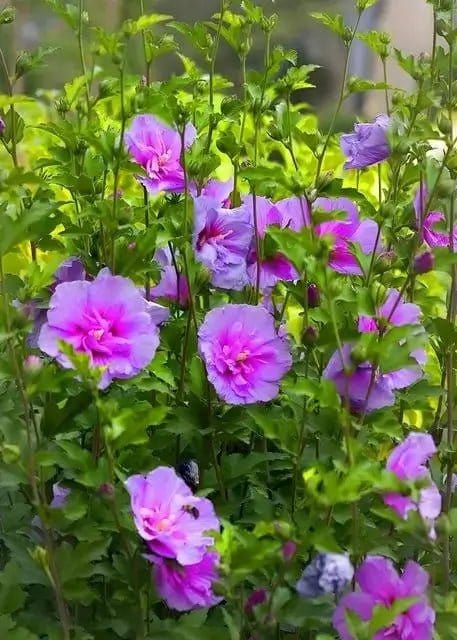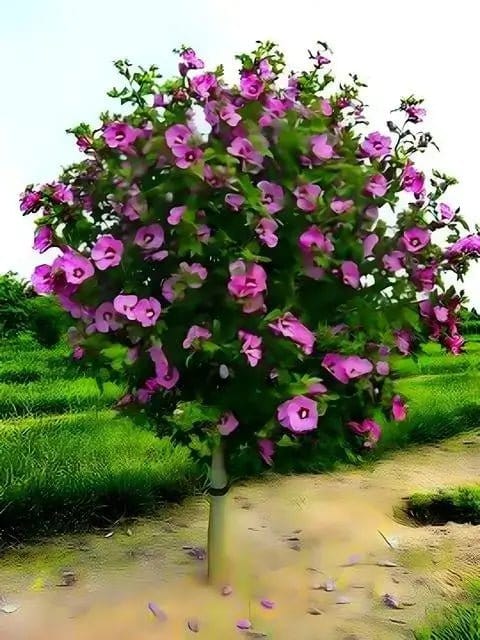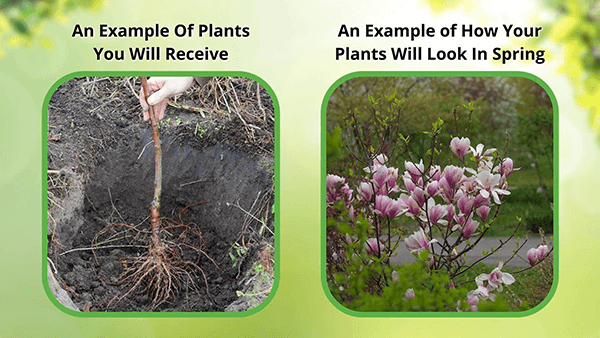Pink Hibiscus
Couldn't load pickup availability
We do not ship this plant to the following states:
OR.AZ.MS.Ships 10-12 Days
OR.AZ.MS.
Hibiscus Rosa-Sinensis - Pink Hibiscus
Pink Hibiscus is a flowering shrub in the Malvaceae family. It is a popular plant known for its desirable flowers, which bloom throughout the year in warm and tropical climates.
Growth And Characteristics
The shrubs can grow up to 8 feet tall and spread to 6 feet. They have dark green leaves that are glossy and slightly toothed. The leaves are ovate and can be up to 6 inches long. The shrub's flowers are large and showy, with a diameter of up to 6 inches. They are trumpet-shaped, with five petals fused at the base. The flowers range from light pink to deep magenta, depending on the variety.
Growing Pink Hibiscus
This plant is easy to grow and maintain, making it a favorite among gardeners. It prefers a warm and humid climate and grows best in partial shade. It can be grown in pots or directly on the ground and is suitable for indoor and outdoor settings.
Requirements
They require well-drained soil rich in organic matter and regular watering, especially during the hot and dry months. Fertilizing them every four to six weeks with a balanced fertilizer can help promote healthy growth and abundant flowering. Pruning them regularly can help maintain their shape and encourage bushy growth.
Benefits
It is a stunning flowering shrub that can add rosiness and beauty to any garden. It's easy to grow, making it a popular choice for novice and experienced gardeners. With the correct cultural requirements, it can bloom year-round and provide a beautiful focal point for any landscape.
The edges ruffle softly and gently. In the middle of the flower, a red center-eye stem sticks out. At the tip of the stem, it has five edges, with bright yellow anthers framing the stem's five edges. This flower is identified as a shrub and part of the mallow family. It can make a very heartfelt gift to a loved one.
If your garden looks dull, these flowers will make it shine brighter than any garden in the neighborhood. They are very eye-catching and heartwarming, always bringing a smile to your face when you see them. The best time for these beautiful flowers to bloom is during the summertime.
The brighter it is outside, the brighter these flowers bloom. They need a lot of sunshine to grow. Taking care of this flower is pretty simple. All you need to do is water it daily when the top 3 inches of the soil are dry, and you are good to go.
This plant can grow 6 to 12 feet across and 2 to 3 feet tall. The bush will also be great for a yard project. You can increase this flower yourself from seed or purchase a pre-grown one to save time.
You can buy these flowers and flower seeds online. Research may be necessary if you want to buy them from a local store to avoid shipping and handling. These flowers will be a great addition to your daily life as their beauty shines bright.
This Is How Your Plants Will Look upon Delivery
Shipping date depends on the date displayed and chosen when you order from the product's page.
We do not offer warranties on products after 5 days past receiving your plants.




